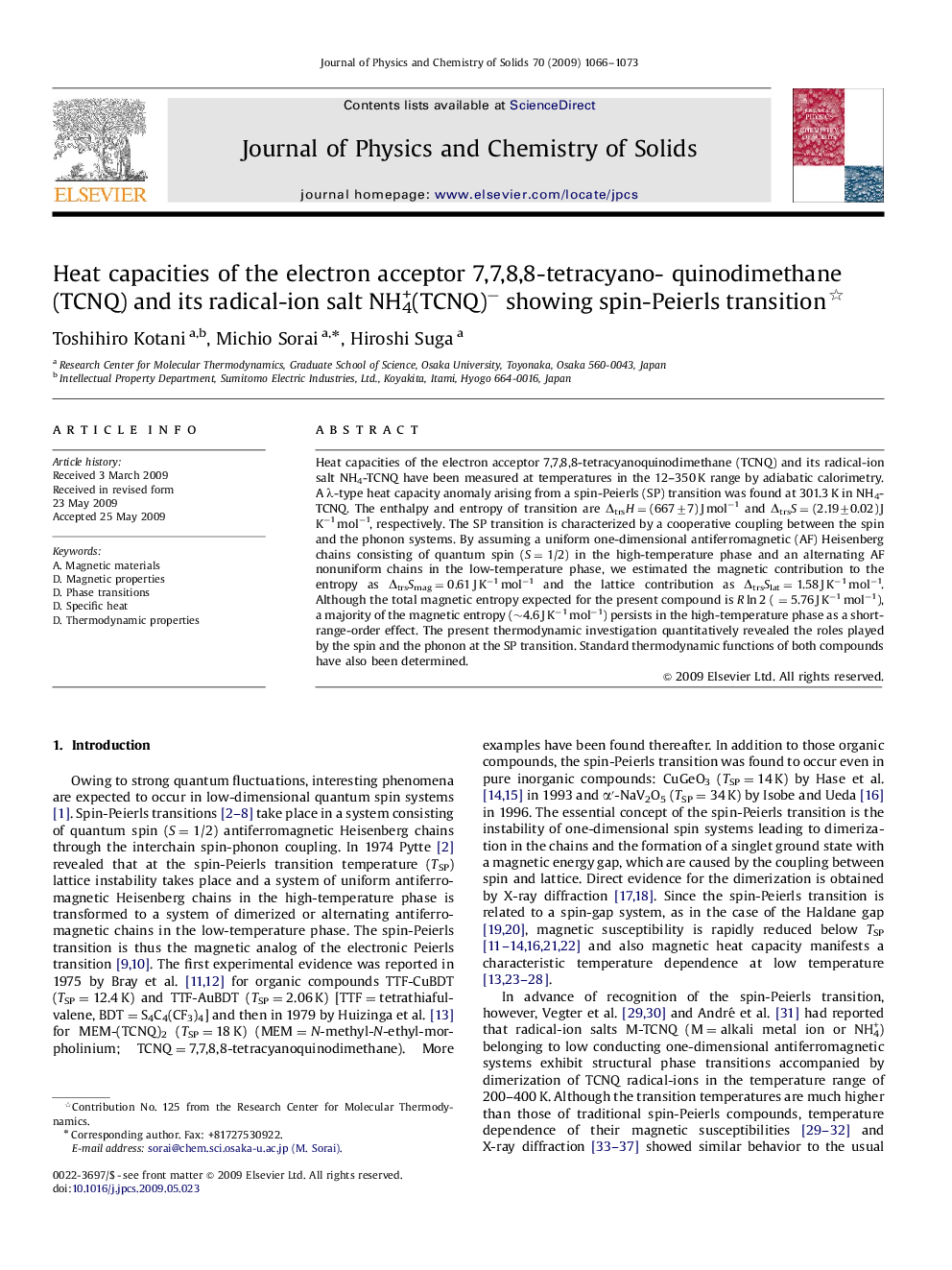| Article ID | Journal | Published Year | Pages | File Type |
|---|---|---|---|---|
| 1517753 | Journal of Physics and Chemistry of Solids | 2009 | 8 Pages |
Abstract
Heat capacities of the electron acceptor 7,7,8,8-tetracyanoquinodimethane (TCNQ) and its radical-ion salt NH4-TCNQ have been measured at temperatures in the 12-350 K range by adiabatic calorimetry. A λ-type heat capacity anomaly arising from a spin-Peierls (SP) transition was found at 301.3 K in NH4-TCNQ. The enthalpy and entropy of transition are ÎtrsH=(667±7) J molâ1 and ÎtrsS=(2.19±0.02) J Kâ1 molâ1, respectively. The SP transition is characterized by a cooperative coupling between the spin and the phonon systems. By assuming a uniform one-dimensional antiferromagnetic (AF) Heisenberg chains consisting of quantum spin (S=1/2) in the high-temperature phase and an alternating AF nonuniform chains in the low-temperature phase, we estimated the magnetic contribution to the entropy as ÎtrsSmag=0.61 J Kâ1 molâ1 and the lattice contribution as ÎtrsSlat=1.58 J Kâ1 molâ1. Although the total magnetic entropy expected for the present compound is R ln 2 (=5.76 J Kâ1 molâ1), a majority of the magnetic entropy (â¼4.6 J Kâ1 molâ1) persists in the high-temperature phase as a short-range-order effect. The present thermodynamic investigation quantitatively revealed the roles played by the spin and the phonon at the SP transition. Standard thermodynamic functions of both compounds have also been determined.
Keywords
Related Topics
Physical Sciences and Engineering
Materials Science
Electronic, Optical and Magnetic Materials
Authors
Toshihiro Kotani, Michio Sorai, Hiroshi Suga,
